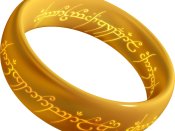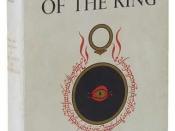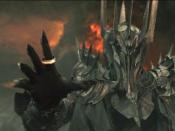Reconciliation with the past is a major theme throughout Tolkien's trilogy, and the gap between the powerful, undying beings of the past and the mortal men of the present and future is starkly evident when the characteristics of the ancient domains are held up against the kingdoms of men. In the first book of The Lord of the Rings, Tolkien creates a rhythmic fluctuation between pleasure and disquietude, which gives the novel an almost serial quality as the characters go back and forth from imminent danger to homely safety. As the story progresses beyond the breaking of the Fellowship in the next two novels, however, the distinction between peril and safety becomes increasingly blurred. The havens of western Middle Earth described in The Fellowship of the Ring are maintained by ancient, well-established beings like Tom Bombadil, Elrond and Galadriel whose power is strong within their own respective lands, but these figures of the past are only remnants of a dying age.
Bombadil is at the extremity of natural history while Elrond and Galadriel represent the original adversaries of the Enemy, and the preeminence of all three, especially the elves, is destined to fade with the coming of the Fourth Age, the Age of Man.
When the Fellowship is intact, the elder havens that provide respite from their perilous journey are undisputed strongholds which no evil can penetrate, but the bastions farther east that the broken Fellowship encounters are much more unstable and guarded by mortal men rather than the ancient, powerful beings. At this point, the story enters fully into the world of men, where elves are viewed with suspicion and the balance between good and evil is in perpetual physical contention. The two great kingdoms of mankind, Gondor and Rohan, are susceptible to the evil powers of Middle Earth...



Lord of the rings
Very well written and nicely discriptive.
1 out of 1 people found this comment useful.